Disclosure: This article contains affiliate links. We may earn a commission from purchases at no extra cost to you, which helps our travel content.
The early morning light spills across the floodplains of the Okavango Delta as our small aircraft lifts off from Maun's dusty airstrip. Below us, a tapestry of waterways glistens like veins of liquid gold against the parched landscape. This moment marks the beginning of what would become our most ambitious African adventure yet—a cross-border expedition connecting two of the continent's most spectacular wildlife sanctuaries. After years of investing in sustainable tourism ventures across Africa, I've finally crafted the ultimate safari route: a two-week journey from Botswana's wildlife-rich Maun gateway through northern Tanzania to the ancient caldera of Ngorongoro Crater. What follows is not just a travelogue but a blueprint for those seeking to witness the grand spectacle of Africa's wildlife corridors as they were meant to be experienced—moving with the rhythms of nature, crossing boundaries both geographical and personal.
Beginning in Botswana: The Magic of Maun and the Okavango
Maun isn't just a starting point—it's the beating heart of Botswana's safari industry and the gateway to one of Earth's most extraordinary ecosystems. My journey began at Royal Tree Lodge, a private reserve just outside town where giraffes casually strolled past my veranda during morning coffee. This sanctuary offered the perfect decompression chamber between my bustling life in Valencia and the wilderness ahead.
After two nights acclimatizing, we boarded a light aircraft to penetrate deeper into the Delta, landing at Sandibe Okavango Safari Lodge, an architectural marvel that mimics the pangolin's scaled exterior while blending seamlessly with the surrounding forest. The raised suites, with their organic curves and private plunge pools, provided front-row seats to elephants splashing through channels and red lechwe bounding across floodplains.
The Okavango's magic lies in its contrasts—bone-dry landscapes transformed by seasonal floods into a labyrinth of crystal-clear channels. Our guide, Letota, navigated these waterways in a traditional mokoro canoe, pointing out tiny reed frogs clinging to swaying papyrus and the tell-tale bubbles of hippos lurking beneath the surface.
For photography enthusiasts, I cannot recommend enough the telephoto zoom lens that captured my most treasured images of leopards draped languidly across sausage tree branches. The investment pays dividends when that once-in-a-lifetime wildlife moment presents itself.
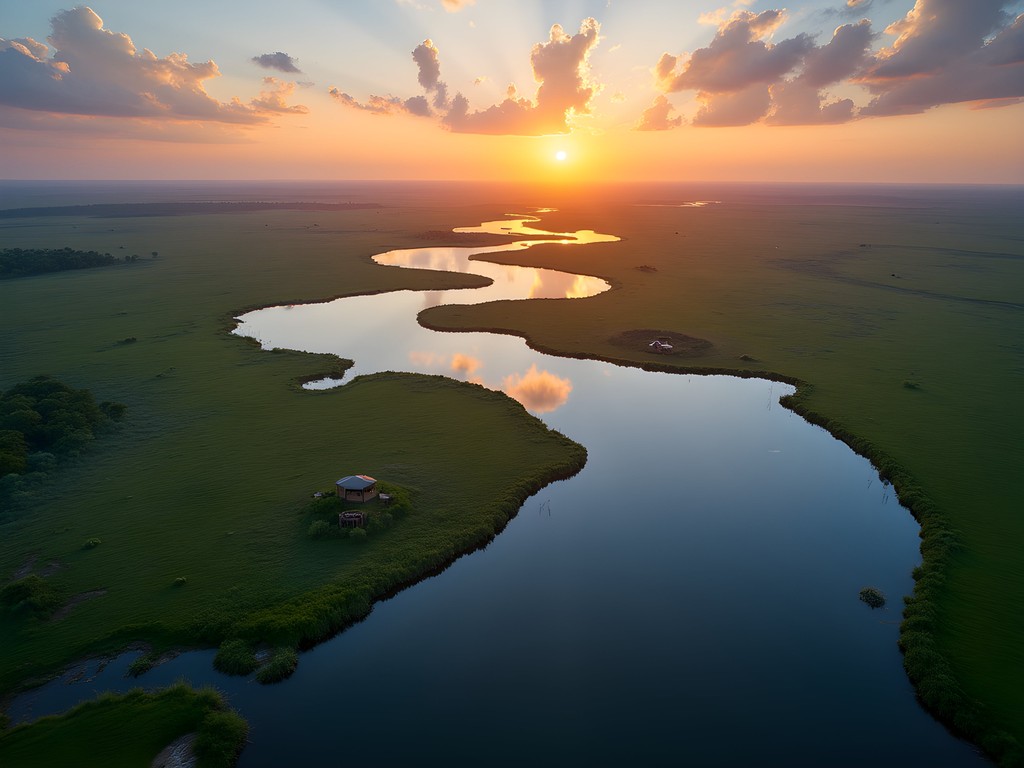
💡 Pro Tips
- Book your light aircraft transfers between camps at least 3 months in advance—these small planes fill quickly during high season
- Pack neutral-colored clothing (khakis, olives, tans) to blend with the environment during game drives
- Bring a quality pair of binoculars with at least 10x42 magnification for spotting distant wildlife
Crossing Borders: From Chobe to the Serengeti Plains
The transition from Botswana to Tanzania represents more than just a stamp in your passport—it's a journey through dramatically shifting ecosystems. After three unforgettable nights in the Okavango, we flew northeast to Kasane, the gateway to Chobe National Park, where we spent two days among the world's highest concentration of elephants.
Our accommodation at Chobe Game Lodge offered front-row seats to the elephant parades along the riverfront, where hundreds gather in the late afternoon light. The lodge's commitment to sustainability—including an all-female guiding team and electric safari vehicles—aligns perfectly with my investment philosophy in eco-tourism.
The border crossing into Tanzania requires patience and preparation. We arranged a private charter flight from Kasane to Kilimanjaro International Airport, where our Tanzanian guide, James, awaited with cold towels and fresh mango juice—small luxuries that make all the difference after immigration formalities.
For this leg of the journey, my travel organizer proved indispensable, keeping passports, vaccination certificates, and currency organized across multiple border crossings. It's these practical details that can make or break complex itineraries.
The Serengeti welcomed us with its iconic landscape—endless golden plains punctuated by flat-topped acacia trees and kopjes (rocky outcrops) where lions survey their domains. Our mobile tented camp, Legendary Serengeti Camp, moved seasonally to follow the Great Migration, positioning us perfectly to witness thousands of wildebeest thundering across the plains in their perpetual search for fresh grazing.
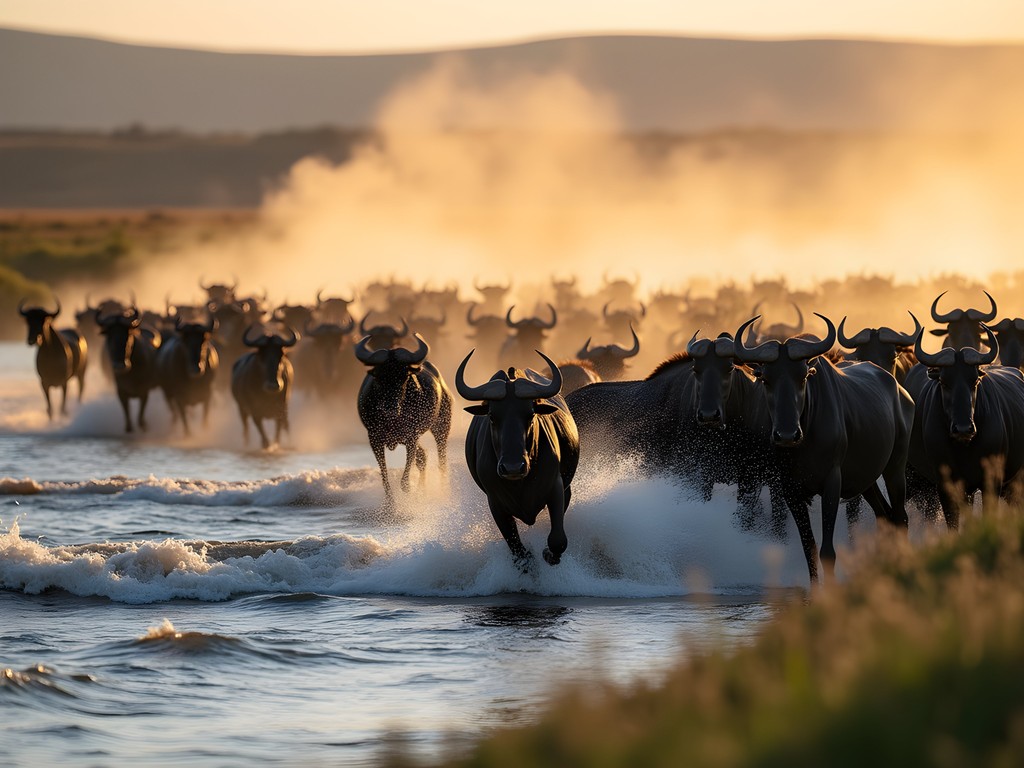
💡 Pro Tips
- Ensure your yellow fever vaccination is up to date and carry the certificate—it's required for this border crossing
- Arrange VIP immigration assistance at Kilimanjaro Airport to streamline the entry process
- Exchange some currency before crossing as ATMs can be scarce in remote areas
The Architectural Marvel of Ngorongoro Crater
After the sprawling expanse of the Serengeti, Ngorongoro Crater feels like nature's perfect amphitheater—a 10-mile wide caldera creating a self-contained ecosystem that's home to approximately 25,000 large animals. As an architecture enthusiast, I was struck by this natural enclosure's perfect design, its steep walls creating a microclimate that nurtures diverse habitats from forests to grasslands to lakes.
We stayed at &Beyond Ngorongoro Crater Lodge, perched dramatically on the crater's rim. The lodge itself is an architectural conversation between traditional Maasai mud-and-stick manyatta designs and baroque European elegance—an unexpected but mesmerizing combination. Each suite features handcrafted chandeliers hanging above claw-foot bathtubs positioned before floor-to-ceiling windows framing the crater below.
Descending the 600 meters to the crater floor at dawn is a journey through time and ecosystems. Morning mist clings to the ancient caldera walls as you wind down the access road, emerging onto a prehistoric landscape where black rhinos graze in the distance and massive tusked elephants move like gray ghosts through golden grasses.
For capturing the vastness of this landscape, I relied on my wide angle lens which perfectly framed both the intimate wildlife encounters and the sweeping panoramas with the crater walls as backdrop.
Unlike the Serengeti's endless horizons, Ngorongoro offers a contained wildness—you can witness lion prides, elephant herds, and flamingo-covered lakes all within a single game drive. This concentration of wildlife makes it the perfect finale to a cross-border safari, delivering guaranteed sightings even for travelers with limited time.
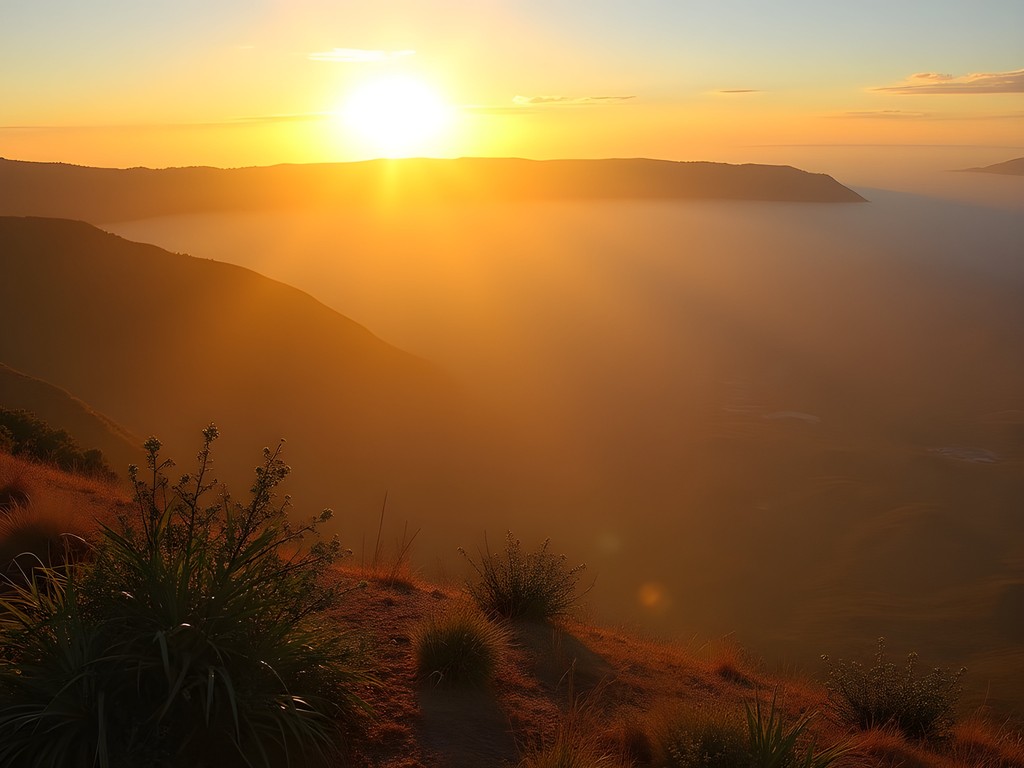
💡 Pro Tips
- Pack layers for the crater rim where temperatures can drop below 10°C (50°F) at night, even in summer
- Book a private safari vehicle for crater drives to set your own schedule and maximize photography opportunities
- Request a packed breakfast to enjoy at one of the designated picnic spots inside the crater rather than returning to the lodge
Cultural Encounters: Beyond Wildlife
While the wildlife remains the centerpiece of any safari, it's the human connections that often leave the most lasting impressions. Throughout our journey, we deliberately chose properties with meaningful community engagement programs.
In the Serengeti, we visited a Maasai village where I spent an afternoon learning traditional beadwork techniques from women who use their craft to achieve financial independence. My background in angel investing naturally drew me to these micro-entrepreneurship models, and I found myself discussing sustainable business practices with women who navigate both traditional cultural roles and modern economic realities.
Near Ngorongoro, we visited Gibb's Farm, a working organic farm and coffee plantation that employs over 130 people from surrounding communities. The farm's model of sustainable agriculture paired with luxury tourism represents exactly the kind of venture I seek to support—operations that preserve cultural heritage while creating economic opportunities.
For those interested in deeper cultural immersion, I recommend carrying a instant camera to share immediate photos with people you meet. This simple gesture creates connection and gives something tangible back to those who share their stories with you.
My daughter may not have joined me on this particular adventure, but I collected stories, recipes, and small handcrafted items to share with her—continuing our tradition of bringing global perspectives into her childhood, even when she remains in Valencia with family.

💡 Pro Tips
- Learn a few basic greetings in Swahili to show respect when meeting local community members
- Ask permission before photographing people, and offer to send them copies when possible
- Support community tourism initiatives rather than visiting villages that exist primarily as tourist attractions
Logistical Mastery: Making the Cross-Border Safari Work
Let's address the elephant in the room—a cross-border luxury safari connecting multiple remote destinations requires meticulous planning. After orchestrating similar journeys for both personal adventure and for sustainable tourism investments, I've developed a system that minimizes stress while maximizing experience.
First, timing is everything. We scheduled our journey for late June, balancing optimal wildlife viewing with slightly lower tourist numbers just before peak season. The wildebeest migration was crossing the Western Corridor of the Serengeti, while Ngorongoro offered clear visibility after the rainy season had greened the crater floor.
For accommodations, I worked with Ker & Downey Africa, a specialist operator with strong presence in both countries. Their relationships with properties ensured seamless handovers between guides and camps, while their private air charters eliminated the logistical headaches of commercial flights between remote airstrips.
Packing for diverse ecosystems and temperature ranges requires strategy. My packing cubes organized different climate zones' clothing, making transitions between destinations effortless. Meanwhile, my weatherproof safari duffel withstood being strapped to roof racks and tossed into light aircraft cargo holds while keeping contents pristine.
Perhaps most importantly, build buffer days into your itinerary. We included a night at Legendary Lodge in Arusha between the Serengeti and Ngorongoro segments—this breathing space allowed for laundry, relaxation, and reflection before the final leg of our journey.
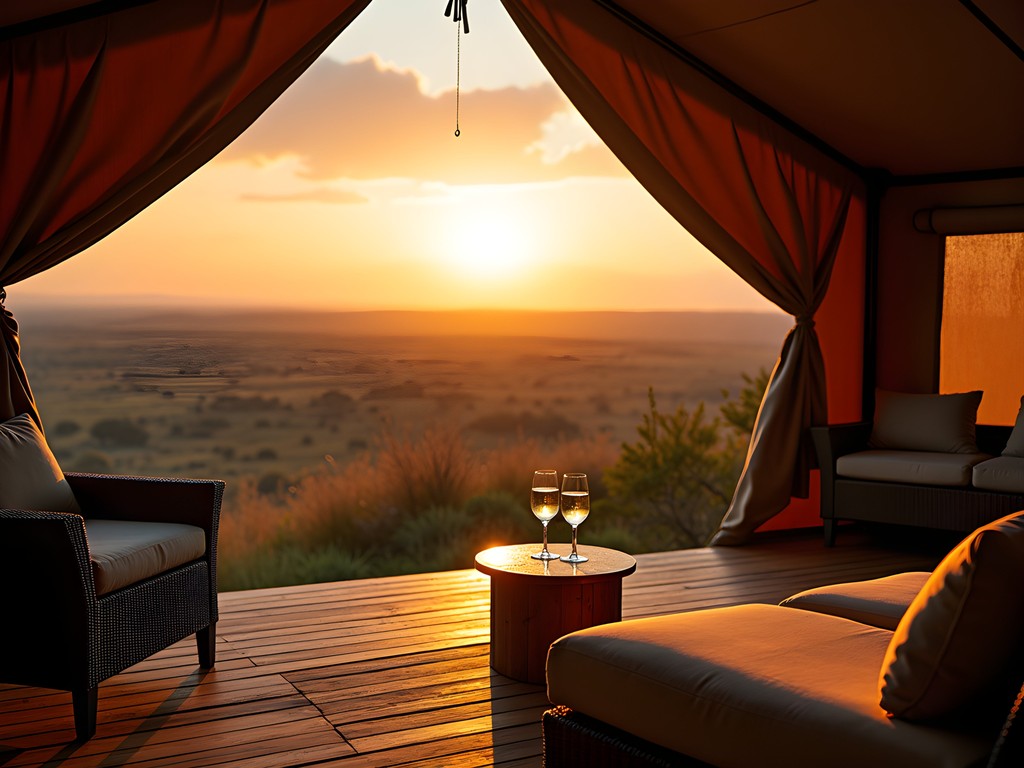
💡 Pro Tips
- Choose a single safari operator with expertise in both countries rather than piecing together separate arrangements
- Limit yourself to 3-4 different camps/lodges over a two-week period to balance experience with travel fatigue
- Invest in comprehensive travel insurance that covers emergency evacuation—remote safaris are not the place to economize on protection
Final Thoughts
As our small aircraft lifted off from Ngorongoro's airstrip for the journey back to civilization, I pressed my forehead against the window, watching the crater recede into the distance—a perfect circle of wilderness in an increasingly fragmented world. This cross-border expedition from Botswana's water-laced paradise to Tanzania's volcanic wonder represents more than just a luxury adventure; it's a testament to conservation without borders. The animals we witnessed don't recognize the human boundaries we've drawn across their ancient migration routes. By experiencing these connected ecosystems as a single journey, we gain a deeper understanding of Africa's wild heart and our responsibility to protect it. Whether you're a seasoned safari enthusiast or planning your first African adventure, this Maun-to-Ngorongoro route offers a masterclass in nature's grandeur. The investment—both financial and emotional—will return dividends in perspective and purpose that continue long after the dust of the savanna has been washed from your boots.
✨ Key Takeaways
- Cross-border safaris offer a more comprehensive understanding of interconnected ecosystems than single-country visits
- Private air transfers between destinations maximize time for wildlife viewing rather than long road journeys
- Combining Botswana's water-rich environments with Tanzania's plains and crater provides extraordinary diversity in a single trip
- Supporting lodges with strong conservation and community programs enhances both your experience and your positive impact
📋 Practical Information
Best Time to Visit
June to October (dry season)
Budget Estimate
$15,000-25,000 per person for a 14-day luxury safari
Recommended Duration
12-16 days
Difficulty Level
Moderate (Comfortable But With Some Early Mornings And Light Aircraft Transfers)
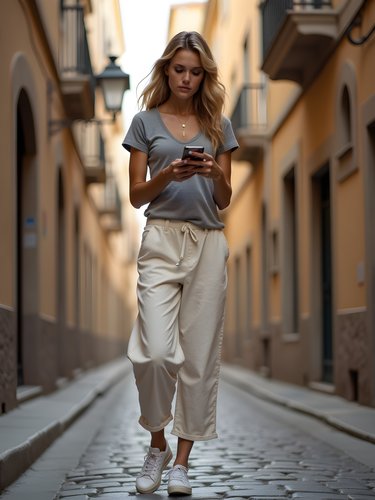
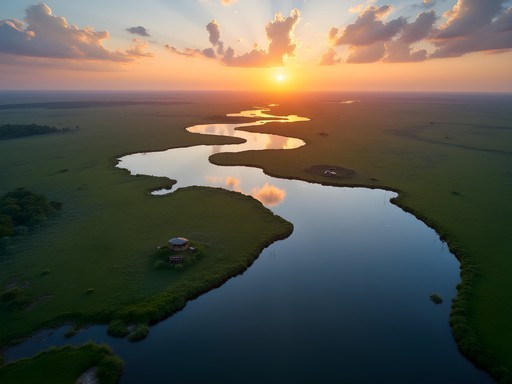














Comments
citywalker
Is this doable in the rainy season? Your photos look so dry and perfect!
Claire Hawkins
It's definitely different in the rainy season! Some camps close, roads can become impassable, but the landscapes turn incredibly green and there are fewer tourists. Wildlife viewing can be more challenging with tall grass, but bird watching is amazing!
wildbuddy
I went to Botswana during the green season and it was magical - different experience but still worth it. The Delta floods differently depending on the time of year too.
Adam Nichols
Excellent write-up, Claire. I did a similar route last year but in reverse, starting at Ngorongoro and ending in the Delta. The ecological transition is fascinating - from the crater highlands to the floodplains. I found the Serengeti-Mara ecosystem particularly interesting from an ecological perspective as the grassland dynamics shift subtly across political boundaries. Did you notice differences in conservation approaches between Tanzania and Botswana? I found Botswana's low-volume, high-cost model created a much more exclusive experience compared to the more accessible parks in Tanzania. Both have their merits, of course. I documented the changing light conditions with my travel zoom lens which handled the dust surprisingly well.
Claire Hawkins
You're spot on about the conservation models, Adam! Botswana's approach felt more exclusive but Tanzania's parks had this wonderful accessibility. The guides in both countries were phenomenal though - especially their tracking skills in Chobe.
sunsetchamp
How difficult was the border crossing between Botswana and Tanzania? Planning something similar for next year!
Claire Hawkins
It wasn't too bad! We had a guide handling the paperwork which helped immensely. Make sure your vaccinations are up to date (especially yellow fever) and carry extra passport photos just in case.
Adam Nichols
I crossed that border last year and would add that having cash in USD makes things smoother. Some border officials can be particular about newer bills (post-2009). Also worth noting the border closes early - around 6pm if I remember correctly.
wildbuddy
Those sunrise shots over the Okavango are incredible! Definitely adding this to my bucket list.
Claire Hawkins
Thanks wildbuddy! The light there at dawn is like nothing else I've experienced. Worth the 4:30am wake-up call!
Megan Martin
Claire, your description of the morning light over the Okavango Delta took me right back to my visit there! I was in Botswana last year for a business conference in Gaborone and extended my trip to include Maun and Chobe. The contrast between the lush delta and the crater ecosystem is truly remarkable. For anyone planning this journey, I'd recommend spending at least 3 days in each location. My favorite moment was watching a family of elephants crossing the Chobe River at sunset - absolutely magical! Did you get a chance to visit any local villages during your trip? The cultural experiences were highlights for me alongside the wildlife.
wildlifephotofan
Megan, what camera gear did you use for your safari? I'm planning a trip next year and debating between upgrading my lens or just using my telephoto zoom that I already have.
Megan Martin
I actually used a similar telephoto setup and it worked perfectly! Just make sure you have extra batteries - I was surprised how quickly they drained with all the shooting opportunities!
smartrider
Wow, this looks incredible! I've been dreaming of an African safari but never thought about combining Botswana and Tanzania in one trip. How difficult was the border crossing? Did you need special visas?
Megan Martin
Not Claire, but I did a similar route last year. The border crossing requires some paperwork but most safari companies handle it for you. You'll need separate visas for both Botswana and Tanzania - I recommend getting them in advance to save time!
smartrider
Thanks Megan! That's super helpful. Did you fly between countries or drive?
Megan Martin
I flew from Maun to Arusha with a connection in Johannesburg. It saved time but driving offers amazing scenery if you have the extra days!
Savannah Torres
What a journey, Claire! We did this route with our kids (ages 8 and 10) last summer and it was life-changing for them. The Okavango Delta was their favorite - they still talk about the elephant that walked through our camp during breakfast! For families considering this trip: the small aircraft flights between locations were actually a highlight for the kids, not scary at all. They loved spotting animals from above. The cultural experiences were just as valuable as the wildlife - our kids learned more about conservation in those two weeks than a year of school could teach. One thing I wish we'd known: bring good binoculars for everyone! We had to share ours and there were some sibling squabbles over who got to use them when the lions appeared. Now each kid has their own pair for our next safari.
nomadguy
Savannah - I'm thinking of taking my 9-year-old next year. Was it too rough/tiring for the kids? Any camps you'd specifically recommend for families?
Savannah Torres
Not at all! The camps were surprisingly comfortable, and most had family tents. I'd highly recommend Sanctuary Chobe Chilwero in Botswana and Lemala Ngorongoro in Tanzania - both had great kids' programs and guides who were amazing with children. Just break up the long drives with activities and bring plenty of snacks!
Pierre Watkins
Claire, excellent breakdown of this iconic safari route. I've analyzed several cross-border safari experiences, and this Botswana-Tanzania combination consistently ranks as the most diverse for wildlife viewing. Your observation about the architectural uniqueness of Ngorongoro is spot-on - it's essentially a 100-square-mile natural zoo with one of the highest predator densities in Africa. One element I find most travelers overlook is the dramatic climate shift between these regions. The Delta's humidity versus the crater's cooler highland climate requires thoughtful packing. I stayed at three different properties along a similar route last year, and the &Beyond lodges offered the most consistent luxury experience across both countries. Did you find the conservation approaches noticeably different between Botswana and Tanzania?
Claire Hawkins
Great point about the climate differences, Pierre! And yes, the conservation models are quite different - Botswana's low-volume, high-cost approach versus Tanzania's more accessible model with higher visitor numbers. Each has merits, but I found Botswana's approach resulted in more pristine wilderness experiences, while Tanzania's model funds more extensive anti-poaching efforts.
AfricaLover2023
Just got back from a similar trip last month! Claire's description of the light in the Okavango Delta is spot on - it's like nowhere else on earth. We also did the Maun to Ngorongoro route but added on Zanzibar at the end for some beach time, which I'd highly recommend as a way to decompress after all the early morning game drives. The cultural visits around the crater were a highlight for us too - our guide introduced us to a local Maasai community that wasn't on the typical tourist route. Definitely arrange this in advance if possible!
Samuel Green
Claire, your journey brought back memories of my own cross-border adventure last year! I did it on a tighter budget though - used public transport between major towns and joined day safaris from there. For anyone looking to do this more affordably, it's definitely possible! The mokoro canoe experience in the Delta was worth every penny - our guide spotted a leopard drinking at sunset that even the luxury lodge guests missed. One tip: the road from Arusha to Ngorongoro gets really rough in rainy season - we got stuck for 6 hours in April. Best to time your visit during dry months if possible. Did you visit any Maasai villages? Our experience near the crater was incredible - less touristy than the ones closer to the main gates.
Claire Hawkins
Samuel, that's amazing you did this on a budget! Yes, we visited a Maasai village near the eastern crater rim - much more authentic than I expected. Agreed on the road conditions - our driver said the same about rainy season travel. Those mokoro experiences are magical, aren't they?
Venture X
Premium card with 2X miles, $300 travel credit, Priority Pass